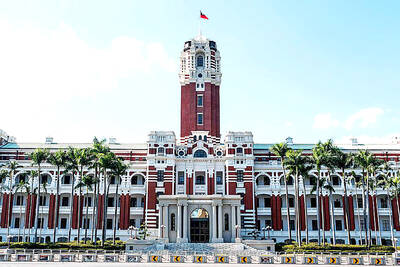American cattle are eating chicken litter, cattle blood and restaurant leftovers that could help transmit mad cow disease, gaps in the US defense against the disease that the Bush administration promised almost 18 months ago to close.
"Once the cameras were turned off, and the media coverage dissipated, then it's been business as usual: no real reform, just keep feeding slaughterhouse waste," said John Stauber, an activist and co-author of Mad Cow USA: Could the Nightmare Happen Here?
"The entire US policy is designed to protect the livestock industry's access to slaughterhouse waste as cheap feed," he said.
The government is now investigating another possible case of bovine spongiform encephalopathy (BSE) or mad cow disease, in the US.
The Food and Drug Administration (FDA) promised to tighten feed rules shortly after the first case of mad cow disease was confirmed in the US, in a Washington state cow in December 2003.
"Today we are bolstering our BSE firewalls to protect the public," Mark McClellan, then-FDA commissioner, said on Jan. 26 last year.
The FDA said it would ban blood, poultry litter and restaurant plate waste from cattle feed and require feed mills to use separate equipment to make cattle feed. Chicken litter is ground cover for the birds that absorbs manure, spilled feed and feathers.
However, last July, the FDA scrapped the restrictions. McClellan's replacement, Lester Crawford, said an international team of experts assembled by the Agriculture Department was recommending even stronger rules, and the FDA would produce new restrictions in line with those recommendations.
Today, the FDA still has not done what it promised to do. The agency declined interviews, saying in a statement only that no timeline exists for new restrictions.
"It's just a lot of talk," said Representative Rosa DeLauro, a Democrat, a senior House Democrat on food and farm issues.
"It's a lot of talk, a lot of press releases, and no action," she said.
Ground-up cattle remains left over from slaughtering operations were used as protein in cattle feed until 1997, when an outbreak of mad cow cases in Britain prompted the US to order the feed industry to quit doing it.
Unlike Britain, however, the US ban has exceptions. For example, it's legal to put ground-up cattle remains in chicken feed. Feed that spills from cages mixes with chicken waste on the ground, then is swept up for use in cattle feed.
Scientists believe the BSE protein will survive the feed-making process and may even survive the trip through a chicken's gut.
That amounts to the legal feeding of some cattle protein back to cattle, said Linda Detwiler, a former Agriculture Department veterinarian who worked on mad cow disease for several years.
"I would stipulate it's probably not a real common thing, and the amounts are pretty small,"she said.

The CIA has a message for Chinese government officials worried about their place in Chinese President Xi Jinping’s (習近平) government: Come work with us. The agency released two Mandarin-language videos on social media on Thursday inviting disgruntled officials to contact the CIA. The recruitment videos posted on YouTube and X racked up more than 5 million views combined in their first day. The outreach comes as CIA Director John Ratcliffe has vowed to boost the agency’s use of intelligence from human sources and its focus on China, which has recently targeted US officials with its own espionage operations. The videos are “aimed at

STEADFAST FRIEND: The bills encourage increased Taiwan-US engagement and address China’s distortion of UN Resolution 2758 to isolate Taiwan internationally The Presidential Office yesterday thanked the US House of Representatives for unanimously passing two Taiwan-related bills highlighting its solid support for Taiwan’s democracy and global participation, and for deepening bilateral relations. One of the bills, the Taiwan Assurance Implementation Act, requires the US Department of State to periodically review its guidelines for engagement with Taiwan, and report to the US Congress on the guidelines and plans to lift self-imposed limitations on US-Taiwan engagement. The other bill is the Taiwan International Solidarity Act, which clarifies that UN Resolution 2758 does not address the issue of the representation of Taiwan or its people in

US Indo-Pacific Commander Admiral Samuel Paparo on Friday expressed concern over the rate at which China is diversifying its military exercises, the Financial Times (FT) reported on Saturday. “The rates of change on the depth and breadth of their exercises is the one non-linear effect that I’ve seen in the last year that wakes me up at night or keeps me up at night,” Paparo was quoted by FT as saying while attending the annual Sedona Forum at the McCain Institute in Arizona. Paparo also expressed concern over the speed with which China was expanding its military. While the US

SHIFT: Taiwan’s better-than-expected first-quarter GDP and signs of weakness in the US have driven global capital back to emerging markets, the central bank head said The central bank yesterday blamed market speculation for the steep rise in the local currency, and urged exporters and financial institutions to stay calm and stop panic sell-offs to avoid hurting their own profitability. The nation’s top monetary policymaker said that it would step in, if necessary, to maintain order and stability in the foreign exchange market. The remarks came as the NT dollar yesterday closed up NT$0.919 to NT$30.145 against the US dollar in Taipei trading, after rising as high as NT$29.59 in intraday trading. The local currency has surged 5.85 percent against the greenback over the past two sessions, central